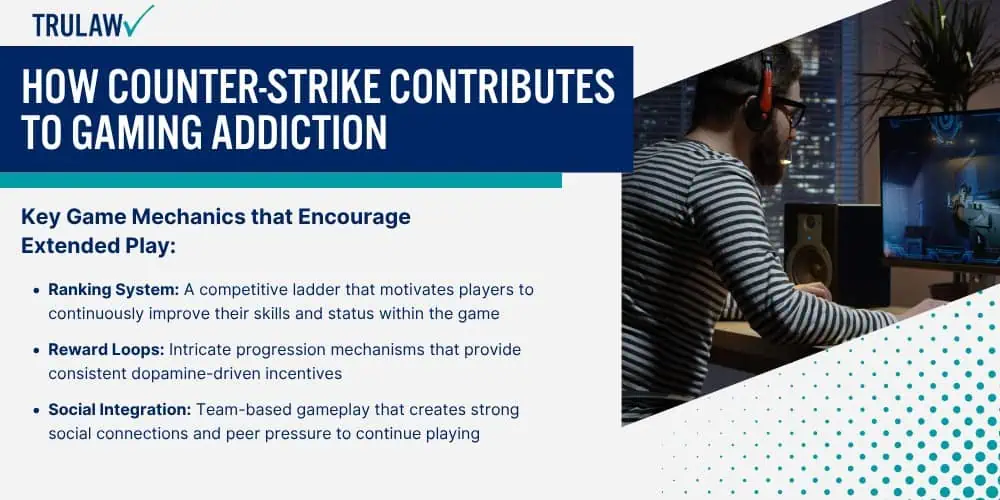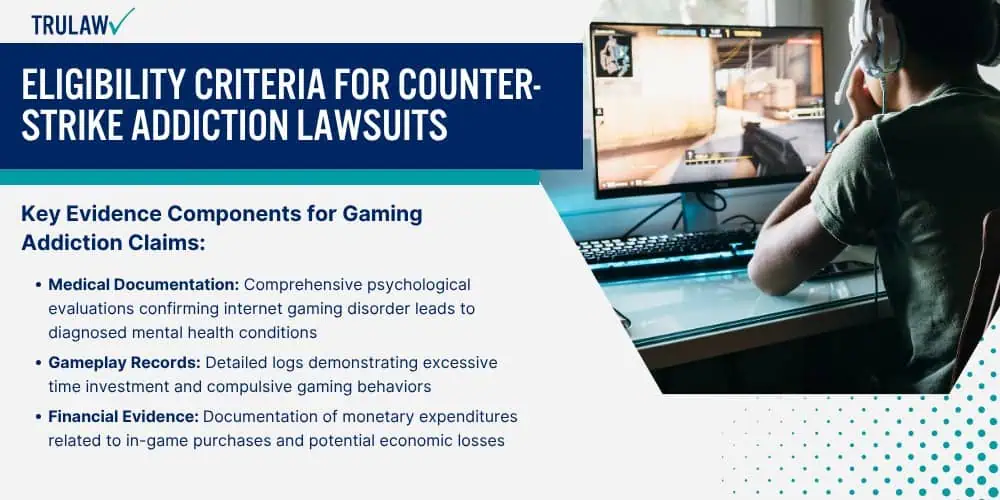The rise of video game addiction has become a significant concern for mental health professionals and legal experts, with major video game companies facing increasing scrutiny for their design practices.
Counter-Strike, developed by Valve Corporation, represents a prime example of how game mechanics can potentially foster addictive behaviors among players who play video games for extended periods.

Valve Corp: Game Mechanics and Player Retention Tactics
Valve Corporation has developed sophisticated game design strategies that encourage prolonged engagement and repeated interaction.
The company’s approach to game development focuses on creating immersive experiences that keep players deeply invested in the game’s ecosystem.
Key Game Mechanics that Encourage Extended Play:
- Ranking System: A competitive ladder that motivates players to continuously improve their skills and status within the game
- Reward Loops: Intricate progression mechanisms that provide consistent dopamine-driven incentives
- Social Integration: Team-based gameplay that creates strong social connections and peer pressure to continue playing
- Skill-Based Matchmaking: Adaptive systems that keep players consistently challenged and engaged
These design elements work synergistically to create an environment that maximizes player retention and emotional investment.
By carefully crafting game mechanics that tap into psychological triggers, Valve has developed a system that encourages players to spend significant time and mental energy within the game’s universe.
The Role of Skins in Microtransactions
The video game industry has increasingly relied on microtransaction models, with Counter-Strike emerging as a landmark example of this economic strategy.
Skins, or cosmetic items that modify weapon appearances, have become a critical component of the game’s monetization approach.
Skin Trading and Economic Implications:
- Rare Item Scarcity: Creating artificial value through limited edition and rare skin designs
- Secondary Market Development: Enabling external trading platforms that extend the economic ecosystem
- Psychological Pricing: Implementing pricing strategies that encourage incremental purchases
- Gambling-Adjacent Mechanics: Introducing randomized skin acquisition methods that mimic gambling experiences
The introduction of skins has transformed Counter-Strike from a mere competitive shooter into a complex economic platform.
By creating an environment where virtual items carry real-world monetary value, Valve has developed a system that extends player engagement beyond traditional gameplay mechanics.
These design choices highlight the potential risks associated with video game addiction cases, demonstrating how sophisticated game mechanics can create environments that encourage compulsive behavior and sustained financial investment.







